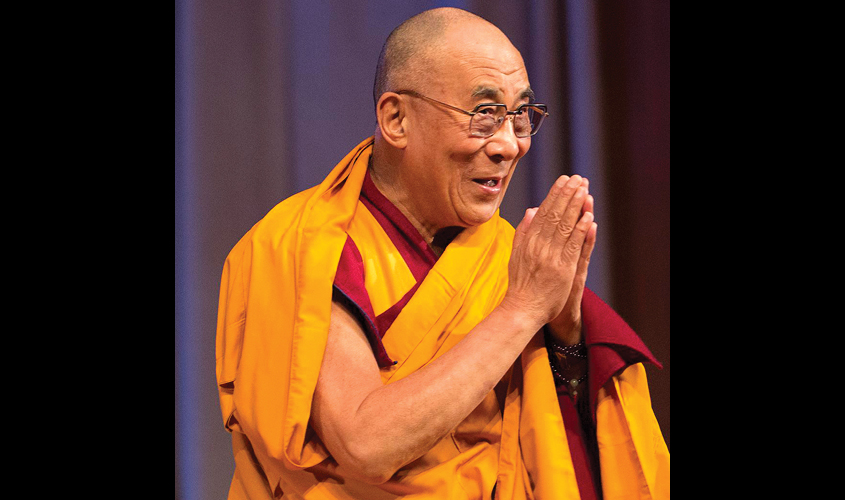This is the 60th year of the 14th Dalai Lama’s exile from Tibet, and of setting up the Tibetan government-in-exile in Dharamsala.
History often tends to repeat itself, or as Spanish philosopher, Jorge Agustín Santayana wrote in The Life of Reason, “Those who cannot remember the past, are condemned to repeat it”. Whenever I set out to write on, or about, Tibet, it is inevitable to conclude that there never was a long walk to freedom for Tibet or for the holy chair of the successive Dalai Lamas. Their journeys were perennially those that forced them out of Tibet as they fled their homeland in the most pressing and arduous circumstances.
This is the 60th year of the 14th Dalai Lama’s exile from Tibet, and of setting up the Tibetan government-in-exile in the hills of northern India in a town named Dharamsala. While addressing a public event here a few weeks ago, the Prime Minister of the Tibetan government-in-exile, Lobsang Sangay recalled the “thousands and thousands of Tibetans killed and died for the cause of Tibet…and many of them burned themselves alive”, and appealed that Tibetans should redouble their efforts to “reunite the Dalai Lama” with his countrymen, and make the return to his native land and to his original residence at the Potala Palace in Lhasa, a reality. While Sangay made this fervent pitch, a few days later the Dalai Lama addressed a few public events in New Delhi stating, “We will remain with the People’s Republic of China but meantime we have the right to our own culture, our own language, and our tradition.” He expressed that Tibet might remain part of China if its geographical, cultural and linguistic autonomy is guaranteed.
Putting the above in contrasting reference to the earliest years of the past century, when the present Dalai Lama’s predecessor, the 13th Dalai Lama (1876-1933) was forced to flee to Mongolia in 1904. Before eventually arriving back in Lhasa via Peking reportedly in December 1909, the 13th Dalai Lama learnt that Chinese military administrator, Chao Erh-feng, infamous for leading brutal military campaigns throughout eastern Tibet, had moved along with his forces into central Tibet, with nearly 2,000 soldiers reaching Lhasa by February 1910.
The jolt struck when Chinese troops arrived within striking distance of Lhasa. However, plans to seize the Dalai Lama and his Ministers got trickled, as per the 1946 account of Charles Bell, Portrait of The Dalai Lama, which chronicles many personal conversations between the author and the 13th Dalai Lama himself—including those in which the Dalai Lama narrates numerous endeavours of the Chinese soldiers to capture him. To that extent, Bell wrote that had the advance guard of Chao’s troops managed to capture the Dalai Lama, they would have imprisoned and put the latter to death.
That was not to be, and the 13th Dalai Lama soon fled Tibet via a track through the mountains between Lhasa and the Himalayas, some 30 miles east of Gyang-tse—the third-largest town in Tibet at that point, covering a distance of 270 miles in nine days. In his own written and recorded account, the Dalai Lama denoted that he chose to come to India to utilise the mediation of the British government for representing Tibetan matters to China. In another account, the Dalai Lama expressed that his testing ride to India had enabled him not just to retain his own freedom, but the hope to establish the freedom of his country when the time was ripe.
Two years later, in June 1912, setting off on his backward voyage from Kalimpong to his own kingdom, the “returning sovereign” was determined to govern it. The five years of exile since 1904, followed immediately by another period of two years since 1910, congealed the 13th Dalai Lama’s resolve to counter the Chinese power and rule as has been recorded in Tibetan biographies, and subsequently also in the Dalai Lama’s political testament, wherein he referred to his years in exile, and attributed them to the dreadful actions of the Chinese.
A few months into his return to Tibet, Yuan Shih-kai, then President of the Republic of China, sent a telegraphed message to the Dalai Lama, apologising for the excesses of the Chinese troops. The “restored” 13th Dalai Lama took the opportunity to respond by stating that he was not soliciting the Chinese government of the day for any rank or position, for he proposed to exercise, both, temporal and ecclesiastical rule in Tibet as has been recorded in Portrait of The Dalai Lama. This, in other words, could be interpreted as the 13th Dalai Lama’s pronouncement of Tibetan independence.
In the contemporary context, the 14th Dalai Lama’s approach towards Tibet’s future can be labelled as being cautiously realistic for he foresees the near impossible road and return to his homeland. The reality is that in a time span of around 100 years, Tibet’s destiny has transitioned from its call for independence, to what today has become “asking for autonomy” while remaining part of the People’s Republic of China.
Dr Monika Chansoria is a Tokyo-based Senior Visiting Fellow at The Japan Institute of International Affairs (JIIA).

